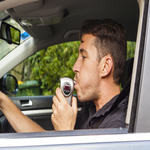After being “out there” for many years, running amuck with my addiction, turning my back on “life and my family” it was time to turn my life around and what better time than the holidays. It was the perfect “gift” I could give myself and my family. Holidays were not always festive when I was in my active addiction. I spent little time with my family and more time with friends drinking and using.
My “norm” became a bottomless pit of darkness, I couldn’t see anything but black surrounding me and my addiction was putting me in harm’s way. I needed help. I needed “to change” no matter what. So when the opportunity came up for me to go to treatment, I went willingly.
I entered treatment at Harmony on December 16th a few weeks before the holiday season. I was excited to leave California and go to Colorado. Even though I was “high” when I arrived in Colorado, I remember the beauty of the mountains and the snow and how I felt like I could get better here. I knew that it was going to require sacrifice if I was going to get better, including letting go of Thanksgiving, Christmas and even New Years. This was my time to get well, and my family’s time to rest and know I was someplace safe.
Being in treatment during the holidays wasn’t so bad. Harmony made the experience special. They provided us with presents on Christmas morning, we decorated and I shared my early recovery with new friends.
My family is important to me but I needed to feel and learn that I was most important. Everyone’s road to recovery is different. Making this decision to stay in treatment was a rare opportunity for me to turn my life around. So I surrendered to all my short comings, the time away from my family, and decided to become the most important reason to get sober.
Today, my sobriety is the reason why my life is so rich and vibrant. My willingness to look back at the short-term sacrifice of being in treatment during the holidays contributed to helping me get my family back again. This year, I can celebrate the joy of the season healthy and full of gratitude, knowing that this gift of recovery continues to bless me and all those I love.
As we approach the holiday season and you are reading this testimonial, know that you are worth every bit of happiness “sobriety” offers. Don’t wait until after Thanksgiving, Christmas or the New Year to make this change in your life. Do it now so that you can experience the countless holidays to come that are free from the pain and suffering of addiction. Give that gift of recovery to yourself and to your family. I did and it was the best gift ever!
Recovery during the Holidays. Watch one woman’s story of hope.










